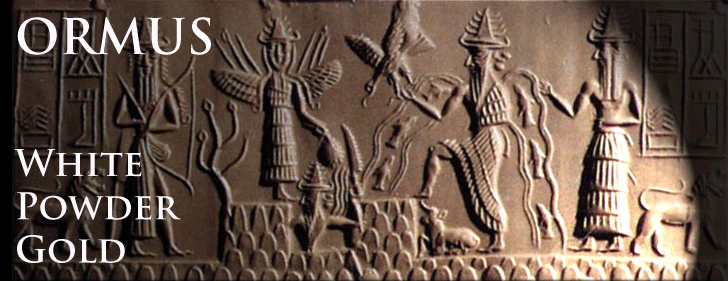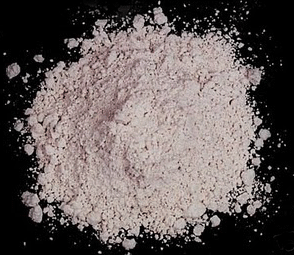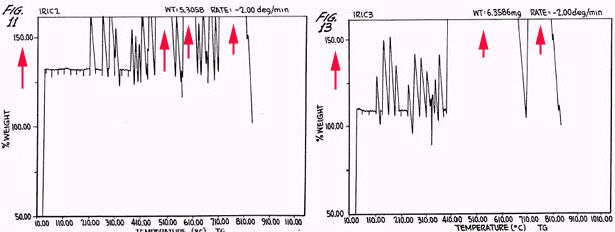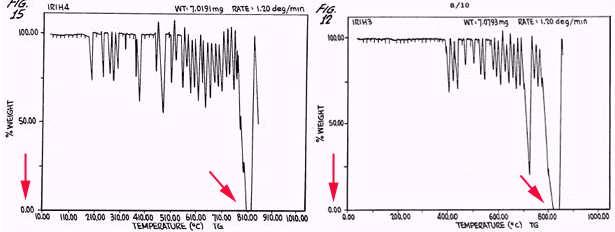
Hudson was in a strange position. He had access to large amounts of highly prized metals that were worth even more than gold, yet they would not test positive with known instruments. Fortunately for Hudson, a small company making rhodium fuel cells was familiar with the analytical anomalies of rhodium -- especially when it was reduced to very small clusters. They bought Hudson's refined "problem stuff" at $10,000 an ounce. The company told Hudson that the fuel cells worked perfectly and that when the spent rhodium was removed it tested positive for rhodium with their instruments. They encouraged Hudson to get a patent on the production of this weird material.
 In doing research for the patent application, Hudson learned that his material was mono-atomic, meaning that it existed as single, solitary atoms. The chemical and electrical properties of mono-atoms in the so-called platinum group [above, pink] of elements are different enough to consider them a fourth state of matter (Maybe even a fifth if you consider plasma as a separate state).
Hudson described this new state of matter, one where the electrons in the outer shell were inaccesible, as Orbitally Rearranged Monatomic Elements (ORME). For other reasons I will discuss it has also become known as ORMUS. Because they are not involved with chemical bonds to other atoms, mono-atomic elements acquire a fast spinning nucleus that is no longer spherical. It has been described as being more like a football or banana. Another strange phenomenon is that all of the spinning nuclei in these mono-atomic atoms do so to the same beat, regardless of their mass. It's like they are all "dancing" to some universal frequency that only effects mono-atomic nuclei.[7] Perhaps as a response to this new vibration, the electrons in the outer shell alter their orbits and become unavailable to chemical and electrical interactions. This is why mono-atomic elements are not detected by analytical systems designed to observe the electron clouds.
 The final product, the white powder [above], contains 12 known mono-atomic elements. The powder has the "feel" and look of white flour -- white because the unavailable electrons did not absorb any of the reflected spectrum. The material was also a superfluid, since there is minimal adhesion between the atoms. But the strangest property of this white powder was still to be discovered. It's this property that has caused all of the infatuation. More weirdness... Hudson's first US patent application was returned as incomplete. He failed to give the weight of his product. This wasn't an oversight. Hudson had tried to obtain a weight but the product was giving anomalous readings there also.
 For example, mono-atomic iridium was repeatedly heated and cooled in a thermo-gravimetric analysis machine that recorded the weight of the sample over time in a controlled atmosphere. Initially the material showed signs of becoming heavier -- as much as 300 to 400 times its original weight! [see above] These charts are from Hudson's patent in 1989.[4] But what really got noticed was the loss of weight. Gold, for example, when converted to a white powder by extreme heating suddenly becomes 4/9 of its original mass. If it is converted back to metallic gold, the weight suddenly returns! [3]
 In thermo-gravimetric analysis the same sample of iridium even showed a negative weight -- meaning that it weighed less than the weight of the sample and the container. [see above] In short -- it levitated! Hudson was to learn that the white powder iridium and rhodium were high-temperature superconductors. Now many more people became interested, not the least being the US military. Hudson claims his US patent was withdrawn because of strategic reasons. Edible Superconductors and Manna One might assume that this kind of a discovery would be the subject of scientific research. But contrary to reason, there is very little published data on this topic. Yes, mono-atomic elements do exist in nature and, yes, certain elements in the platinum group do acquire fast-spin nuclei and their electrons do prevent them from chemical and electrical bonding. That much is known, yet it isn't on the periodic table of elements and it's not taught in university level physics.
Information about mono-atomic matter seems to have somehow gone off the radar, not unlike studies of zero-point energy, UFO propulsion and life extension. It is called "exotic physics" by the scientific community. We know that somewhere, someone is learning how to exploit this discovery, or perhaps they have already, but no reputable scientists will risk their reputations by taking a position on ORME or ORMUS. The matter was further complicated by Hudson himself. Along his interesting journey discovering mono-atomic superconductivity, he became aware of ancient alchemical descriptions of white powder gold. He was convinced that mono-atomic gold was the philosopher's stone and that it was the Biblical "manna" that sustained the Jews in their exile from Egypt.
After hearing Hudson's lectures, people were eating, inhaling and taking ORMUS intravenously as if it really was the magical manna from heaven.[6]

 |